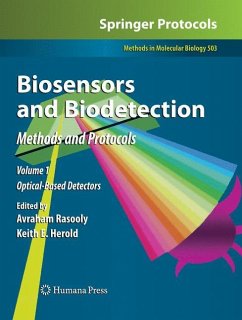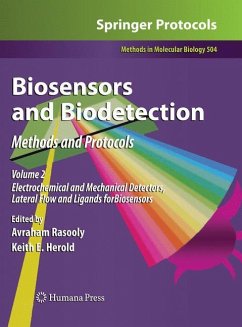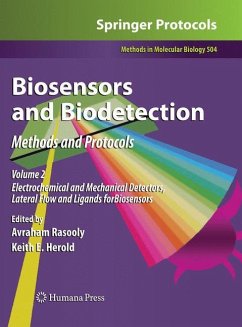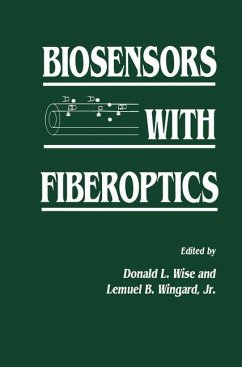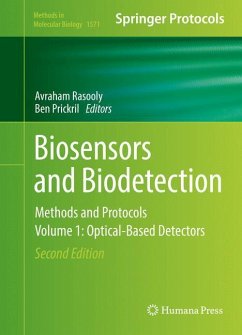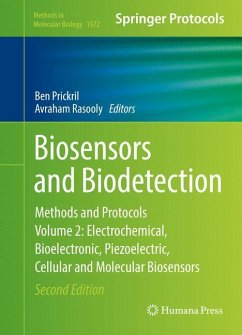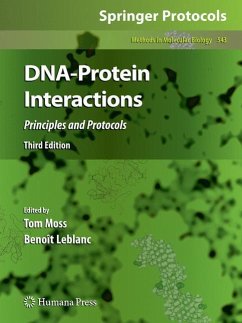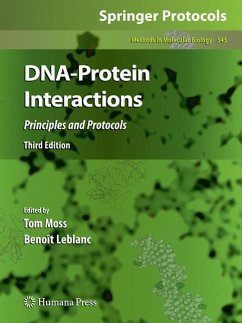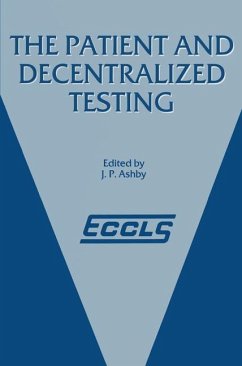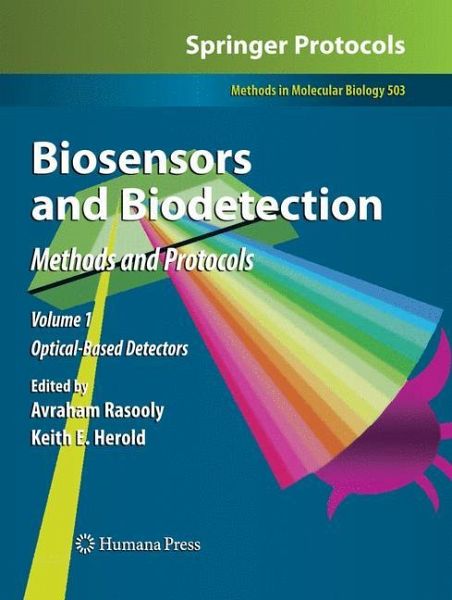
Biosensors and Biodetection
Methods and Protocols Volume 1: Optical-Based Detectors
Herausgegeben: Rasooly, Avraham; Herold, Keith
Versandkostenfrei!
Versandfertig in 6-10 Tagen
77,99 €
inkl. MwSt.

PAYBACK Punkte
39 °P sammeln!
Biosensors combine biological recognition elements and signal conversion elements into a biodetection system. They have been developed for a wide variety of biodetection applications, offering the advantages of increased speed and ease of use compared to traditional detection methods. In Biosensors and Biodetection: Methods and Protocols, leading experts describe the major technologies in the field in extensive technical detail, allowing readers both to understand the technology and to construct similar devices. Volume 1: Optical-Based Detectors delves into direct and indirect optical detector...
Biosensors combine biological recognition elements and signal conversion elements into a biodetection system. They have been developed for a wide variety of biodetection applications, offering the advantages of increased speed and ease of use compared to traditional detection methods. In Biosensors and Biodetection: Methods and Protocols, leading experts describe the major technologies in the field in extensive technical detail, allowing readers both to understand the technology and to construct similar devices. Volume 1: Optical-Based Detectors delves into direct and indirect optical detectors, including methods involving surface plasmon resonance, interferometric sensors, CCD based detectors, and spectrometers, among many other cutting-edge technologies. Written in the highly successful Methods in Molecular Biology(TM) series format, chapters include brief introductions to the subjects, lists of the necessary materials, step-by-step, readily reproducible protocols, and Notes sections, which highlight tips on troubleshooting and avoiding known pitfalls.
Comprehensive and up-to-date, Biosensors and Biodetection: Methods and Protocols is an ideal, user-friendly guide to this vital, versatile technology and a perfect tool for those who wish to further the field.
Comprehensive and up-to-date, Biosensors and Biodetection: Methods and Protocols is an ideal, user-friendly guide to this vital, versatile technology and a perfect tool for those who wish to further the field.





